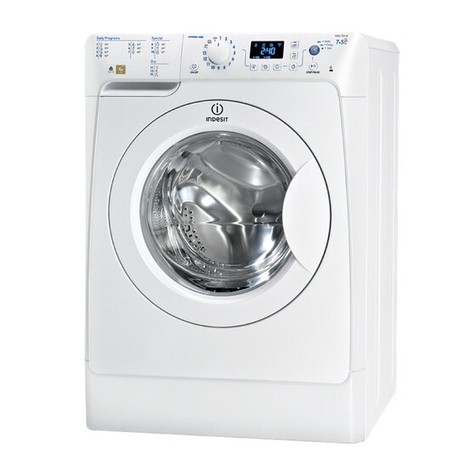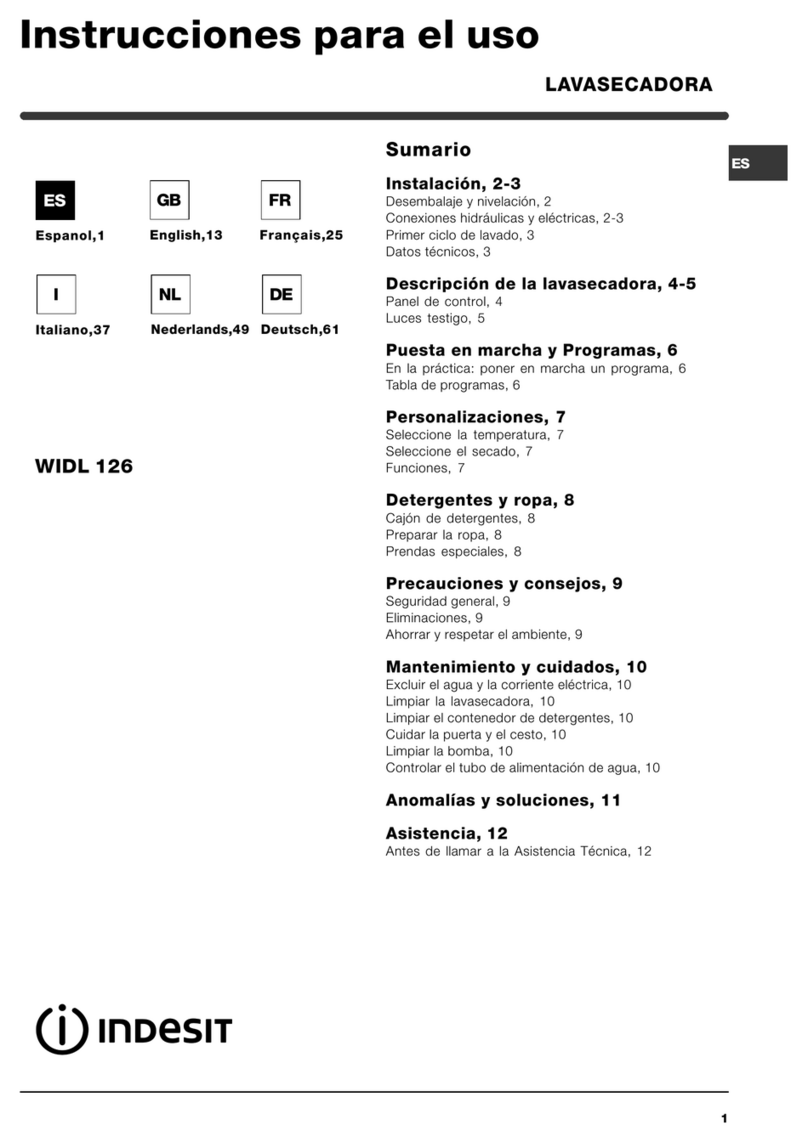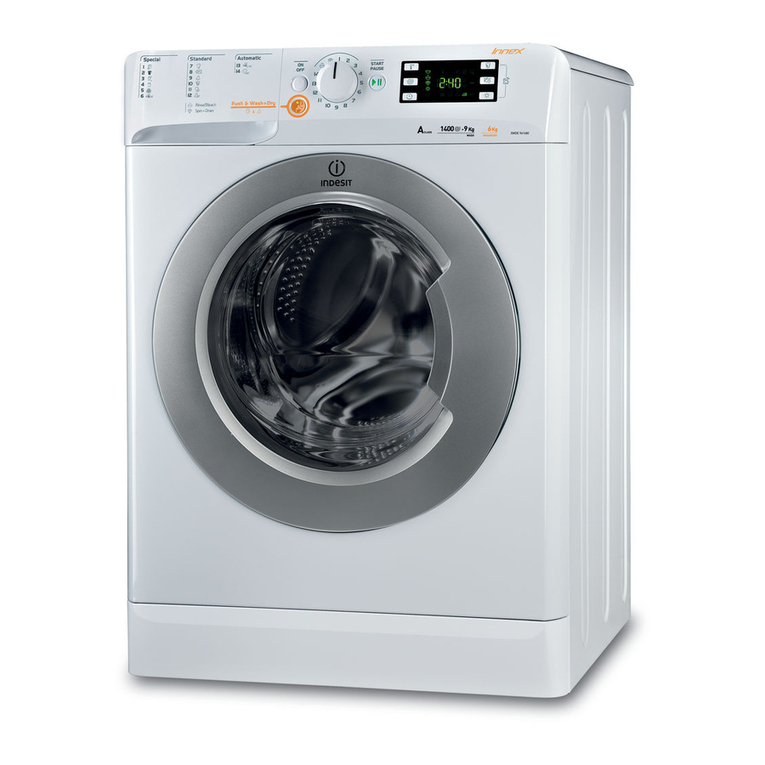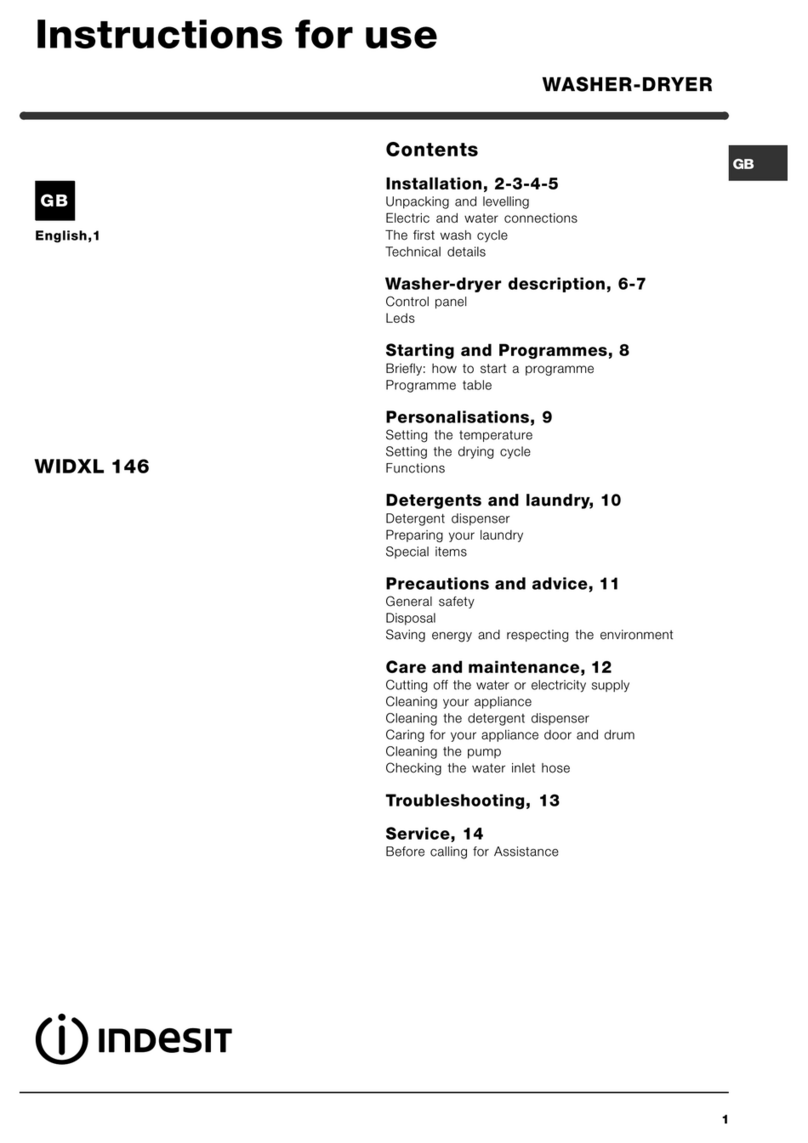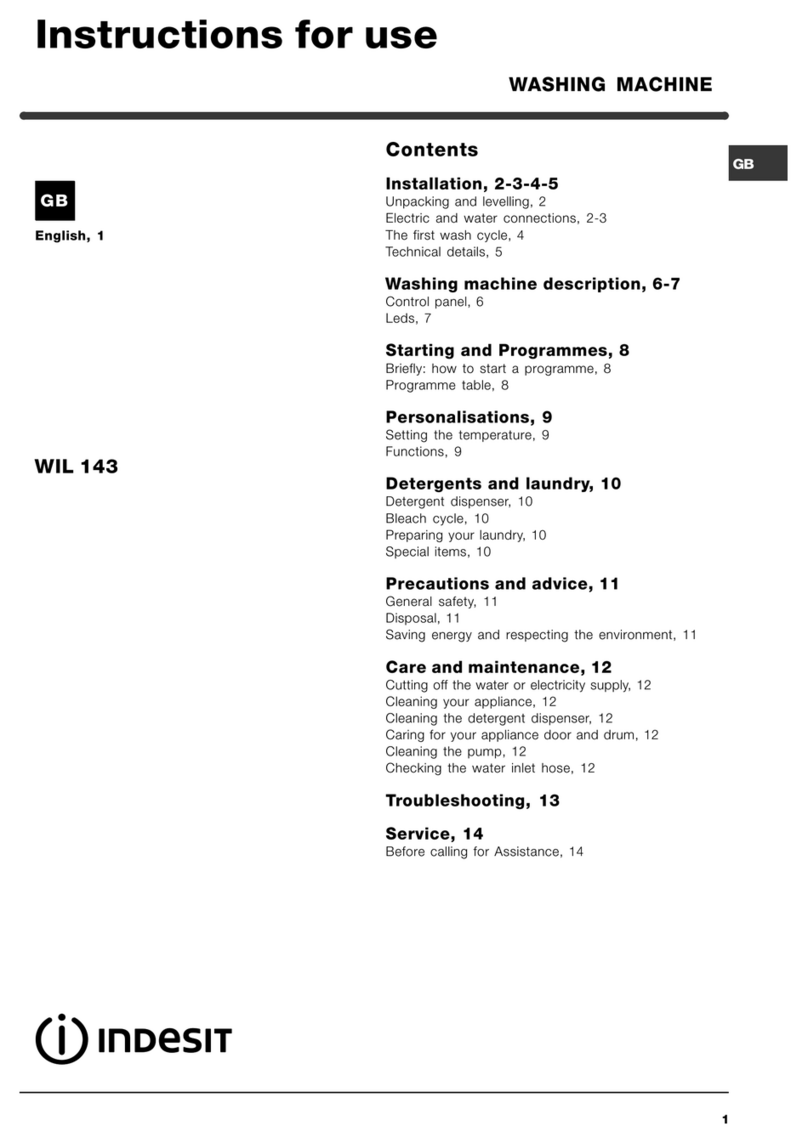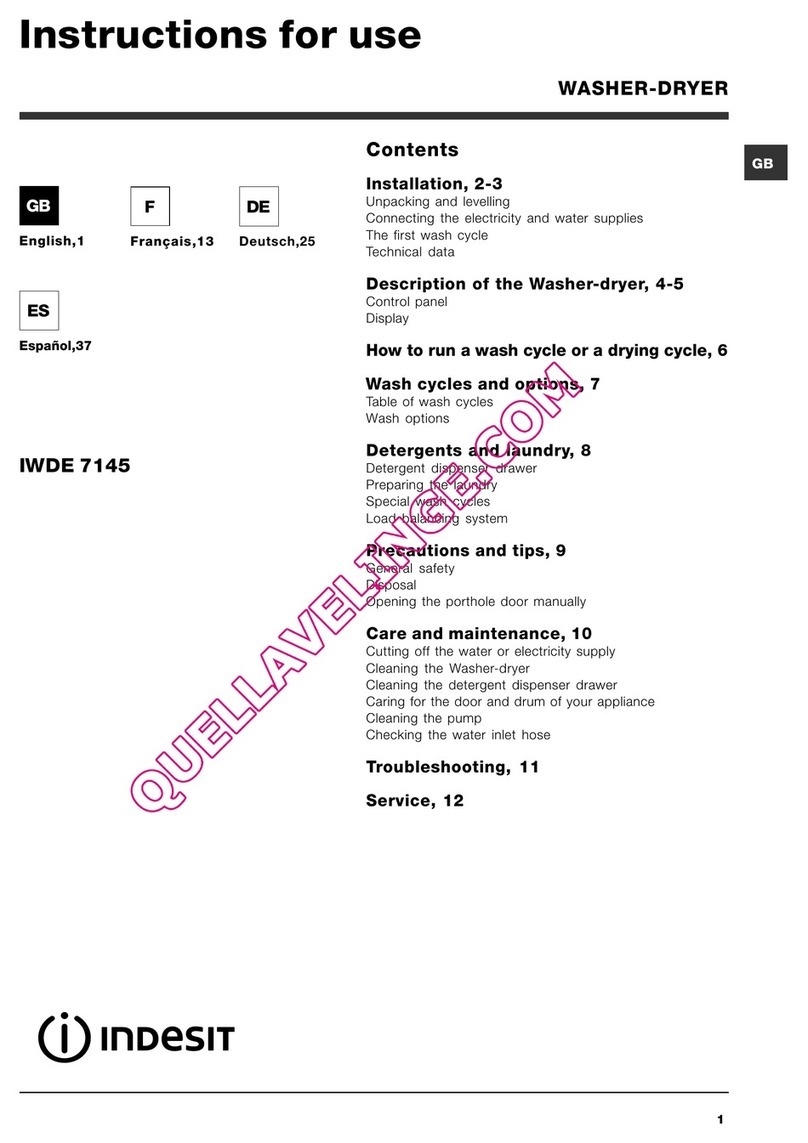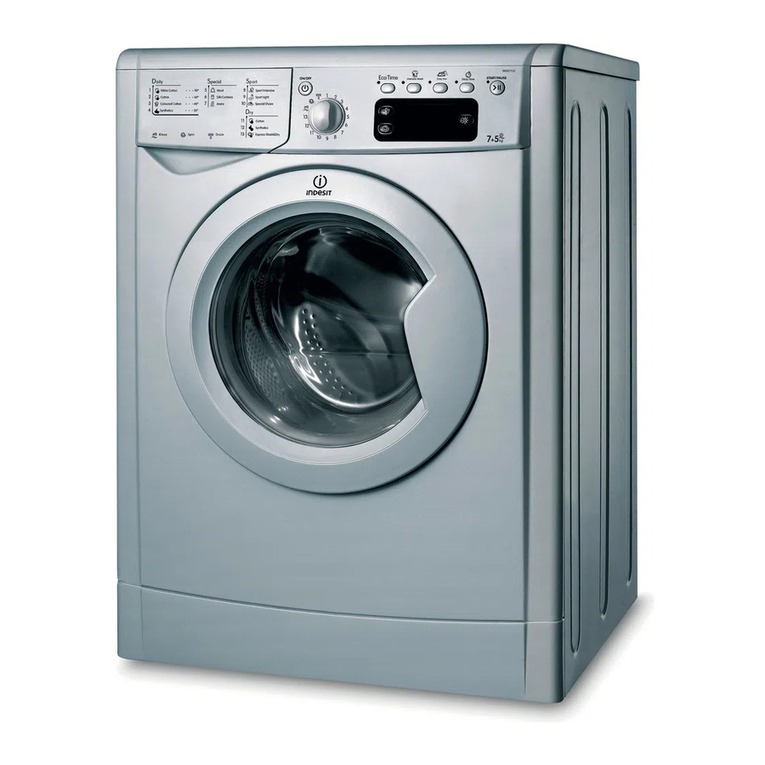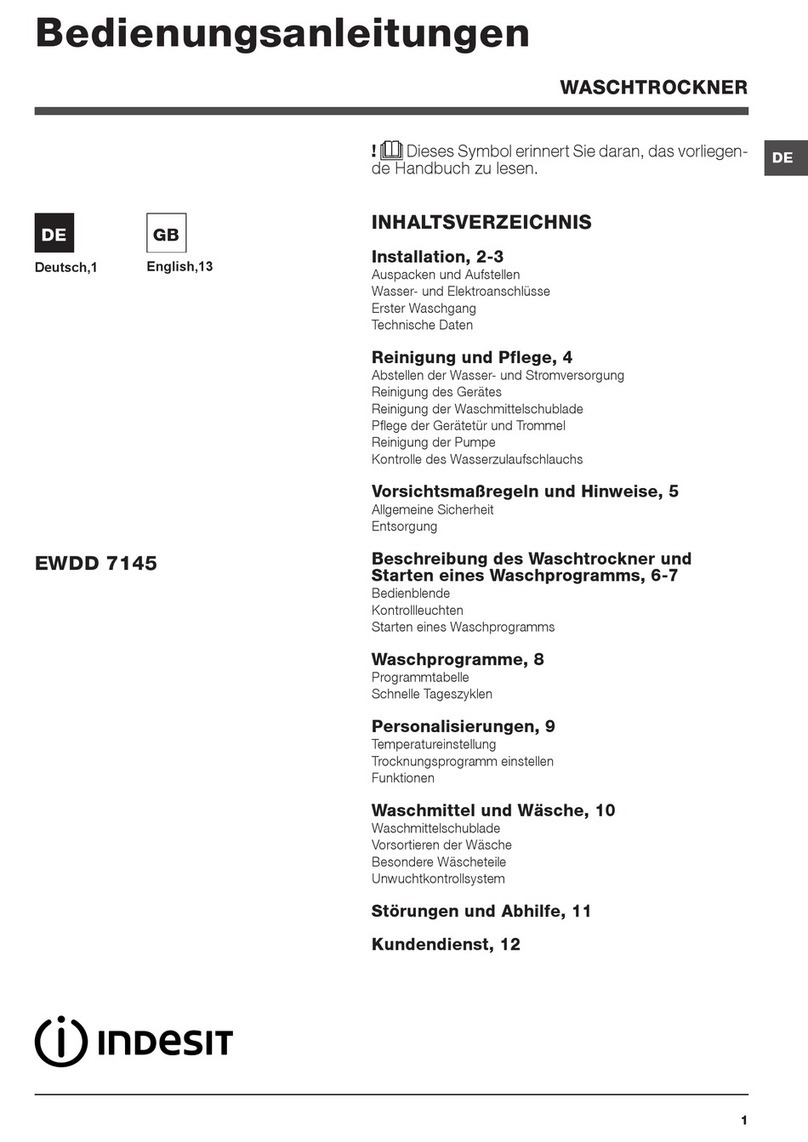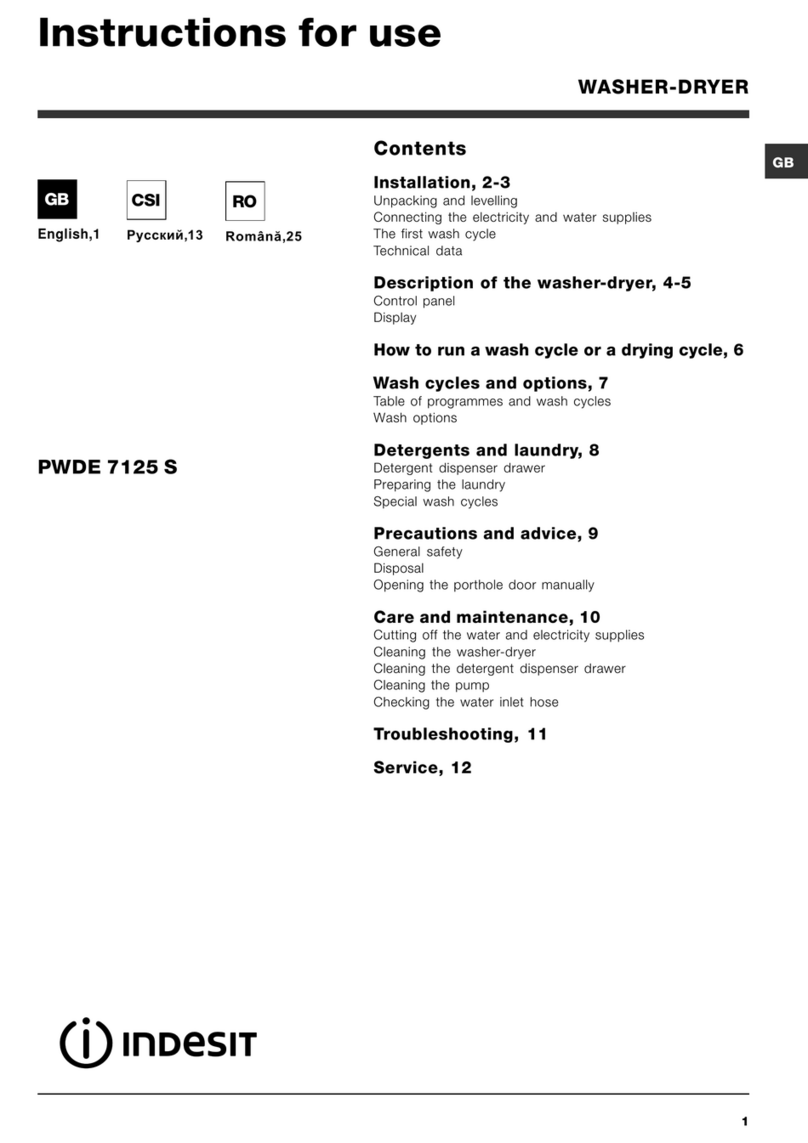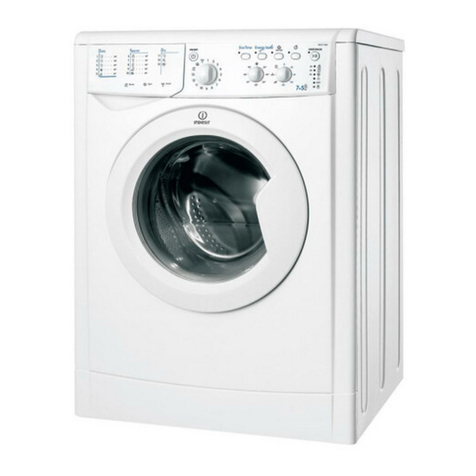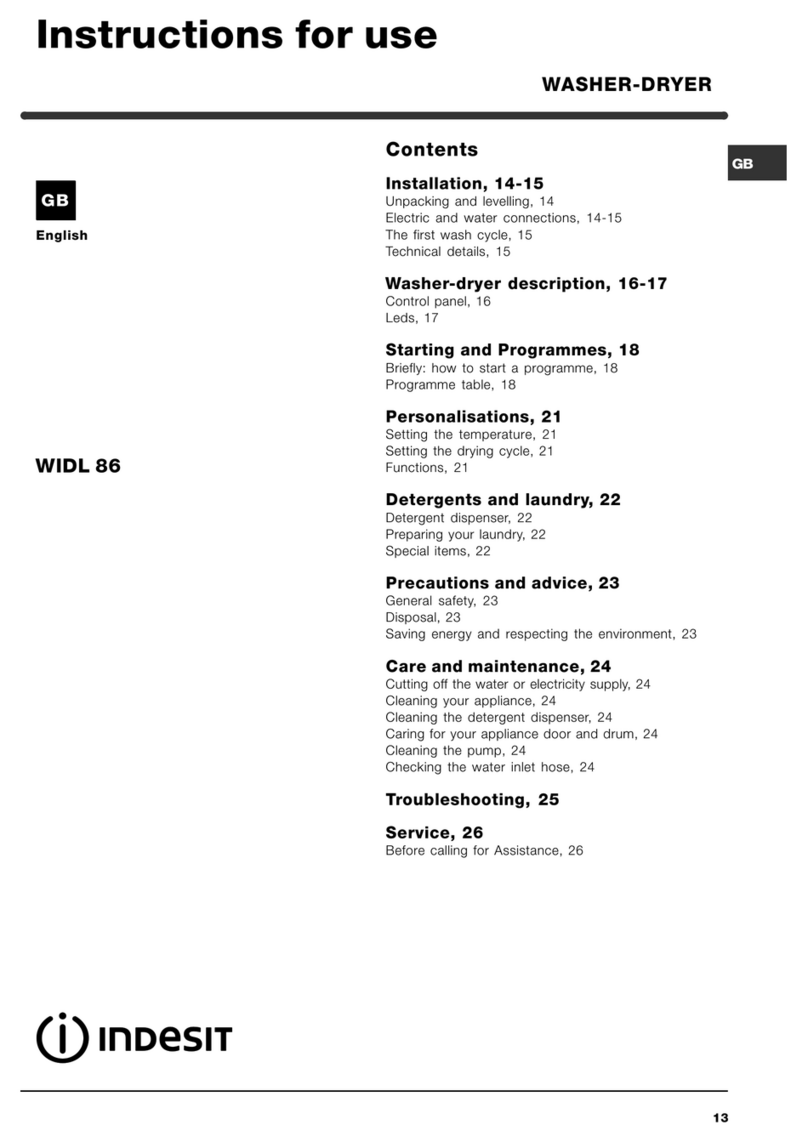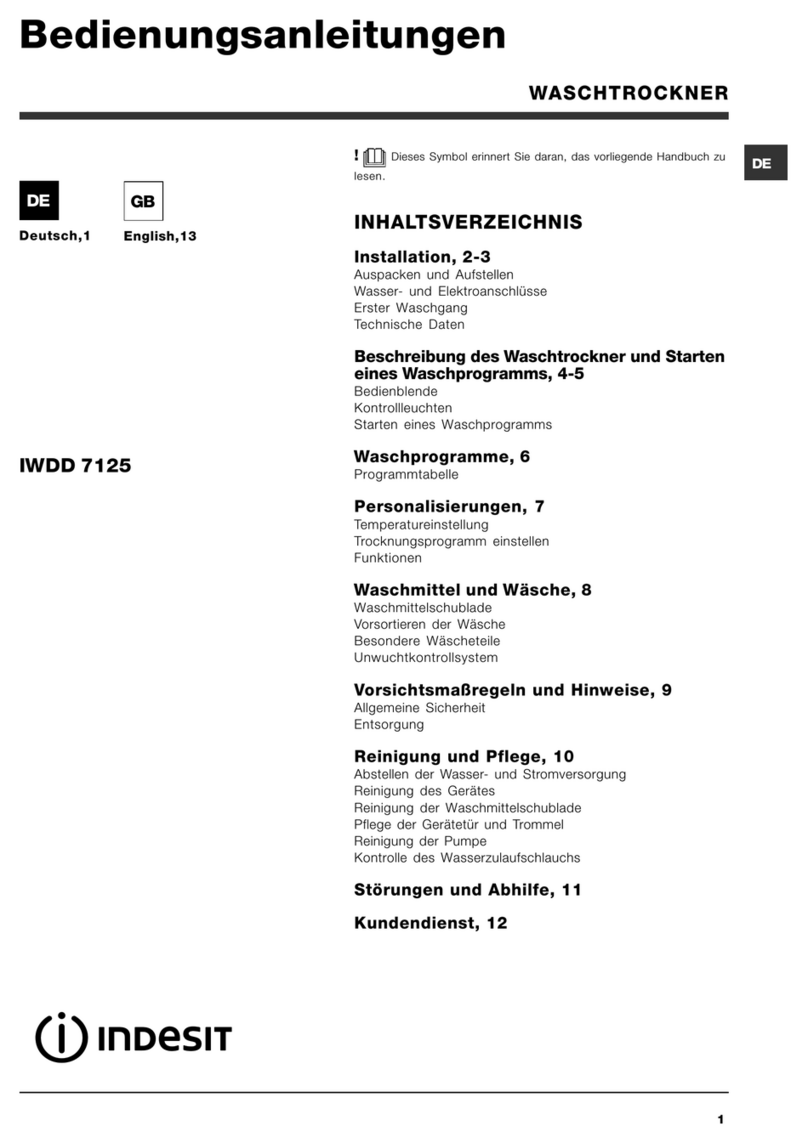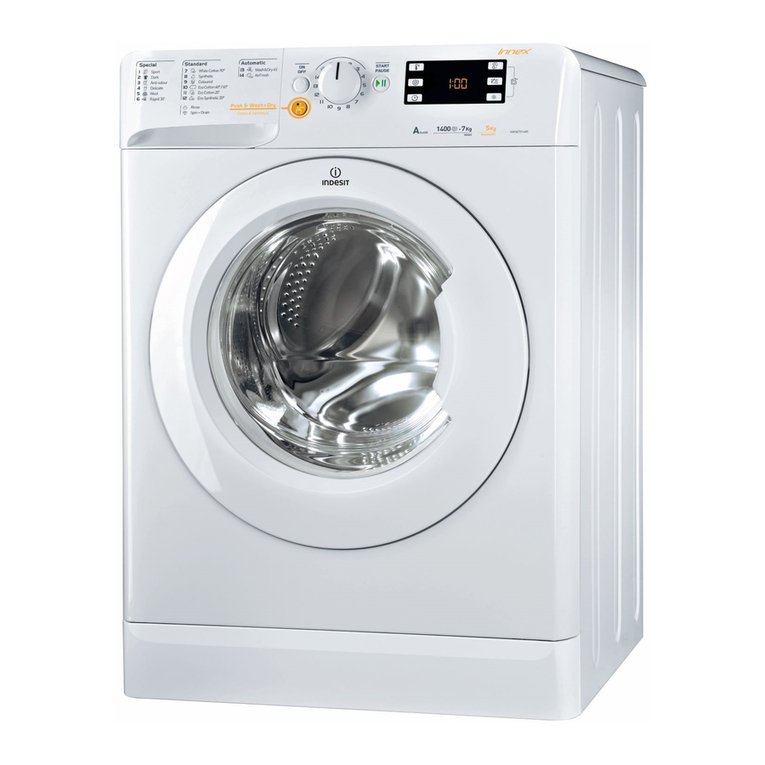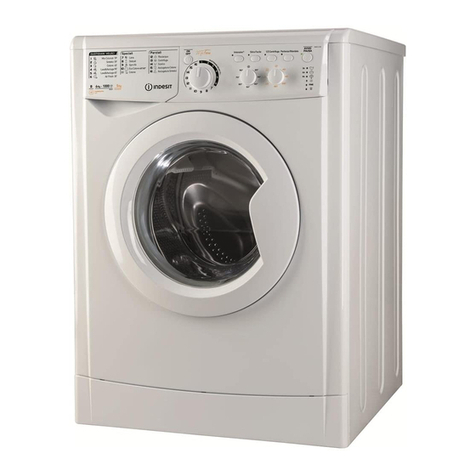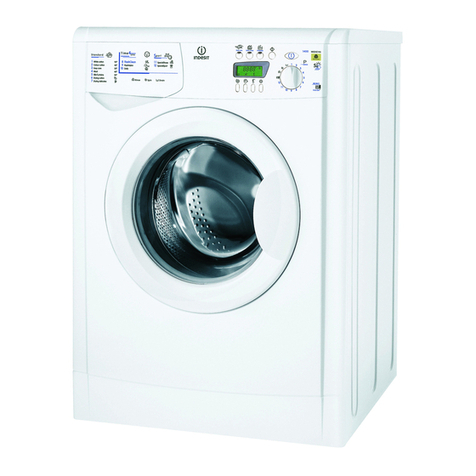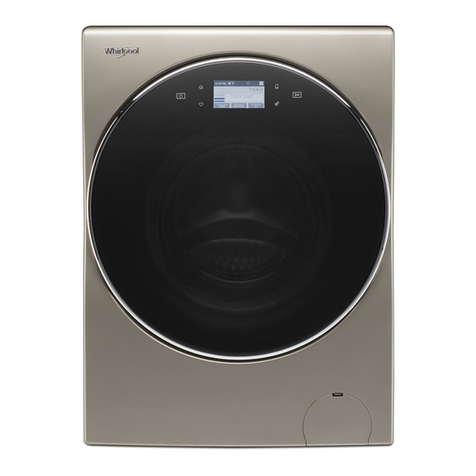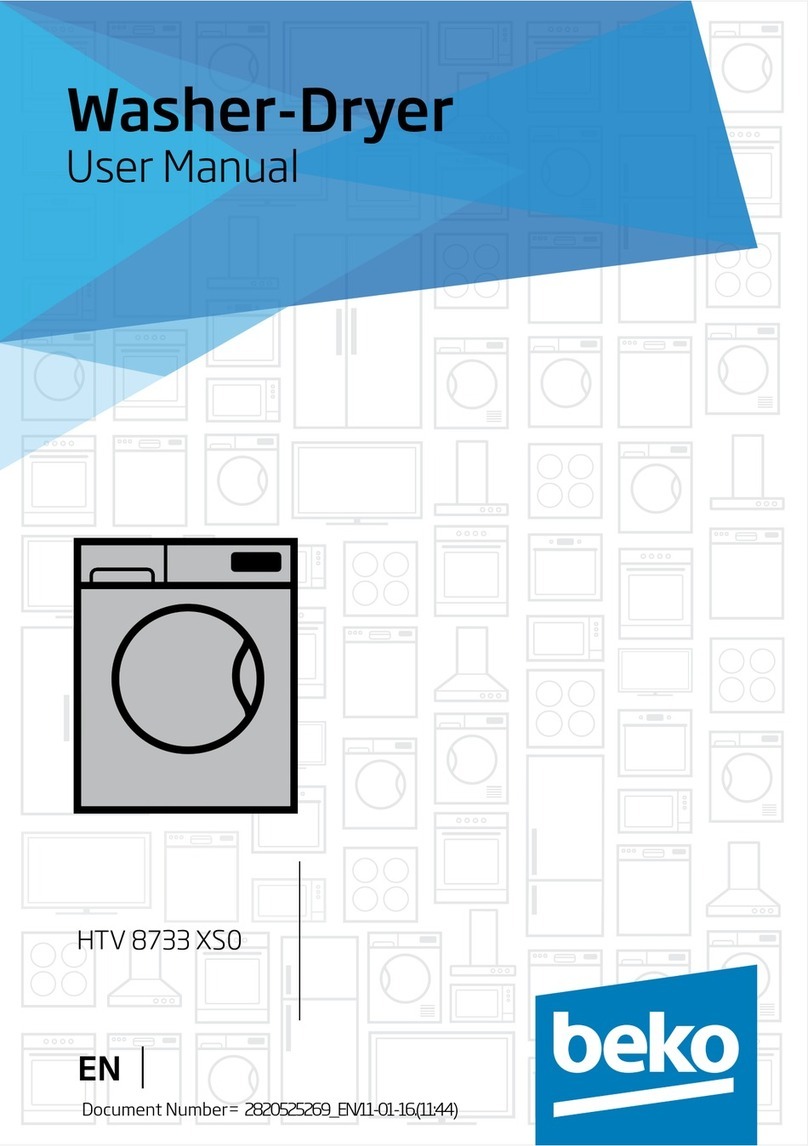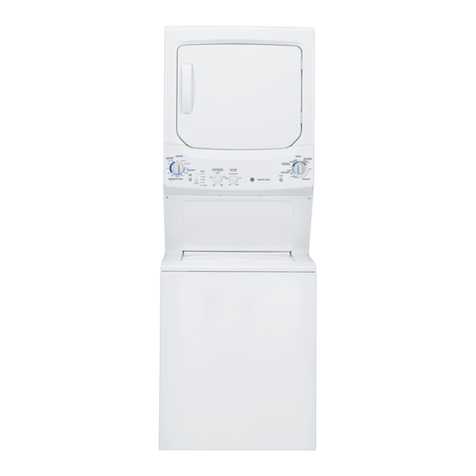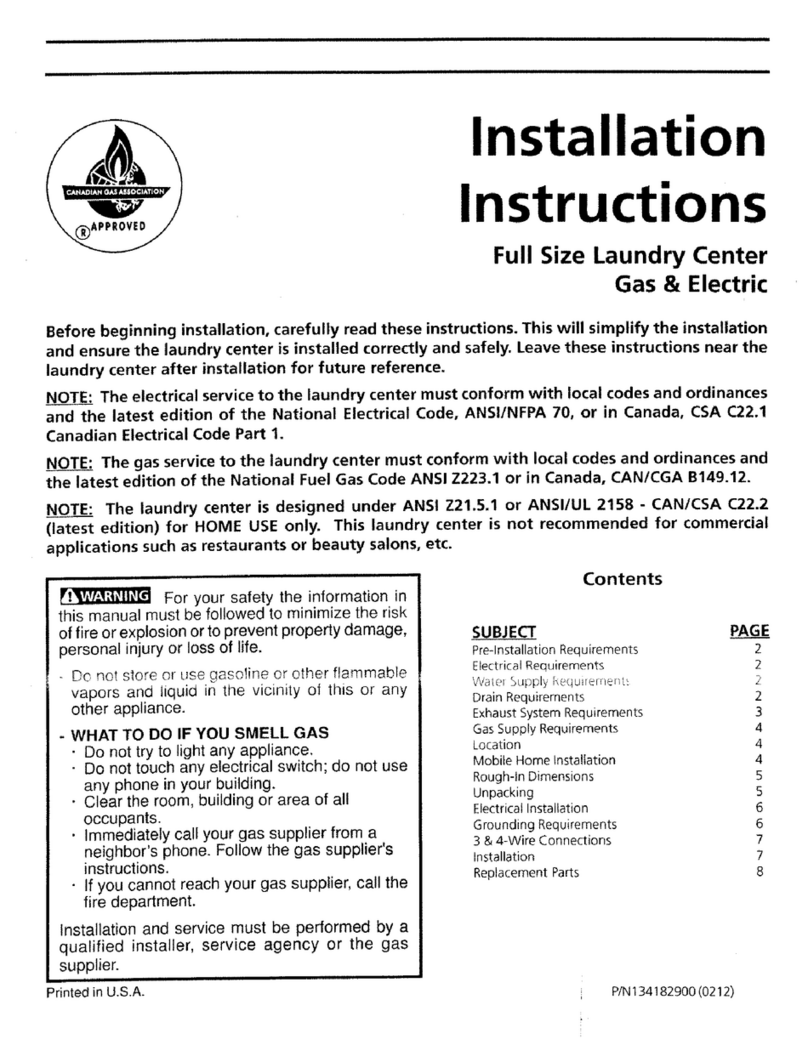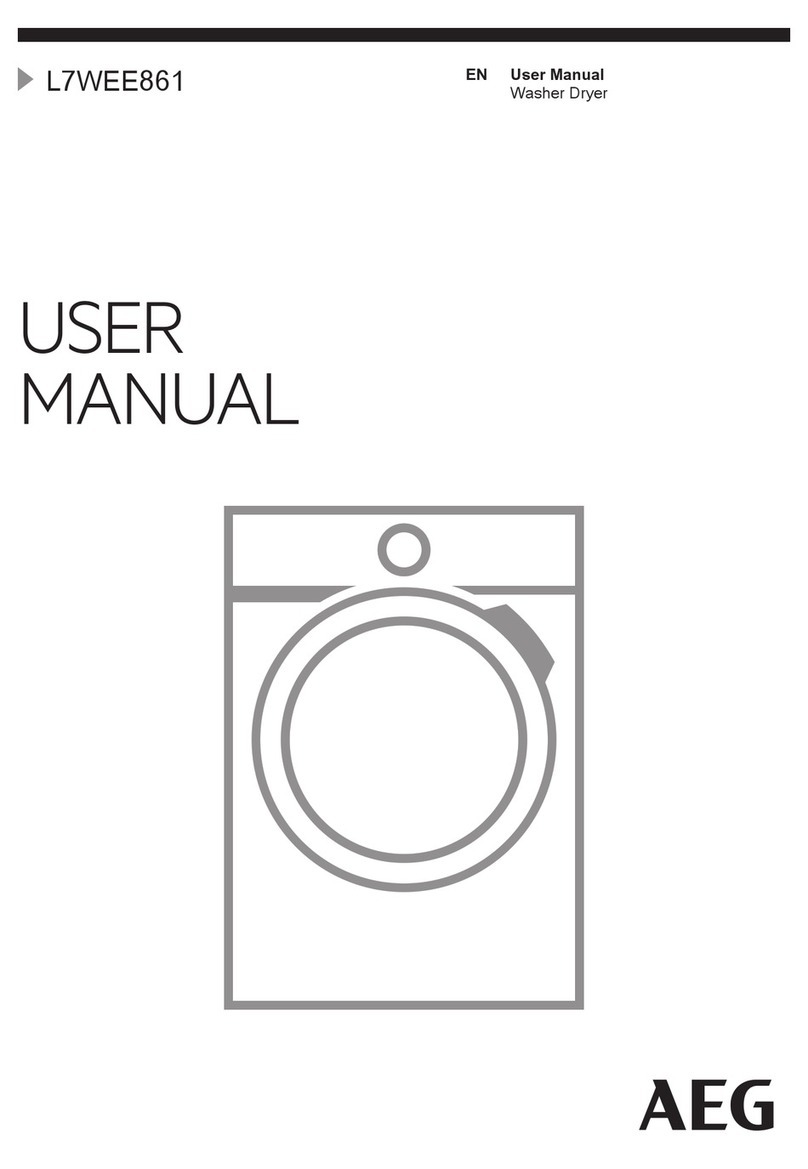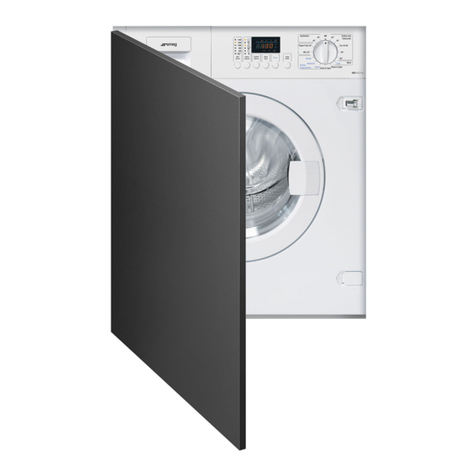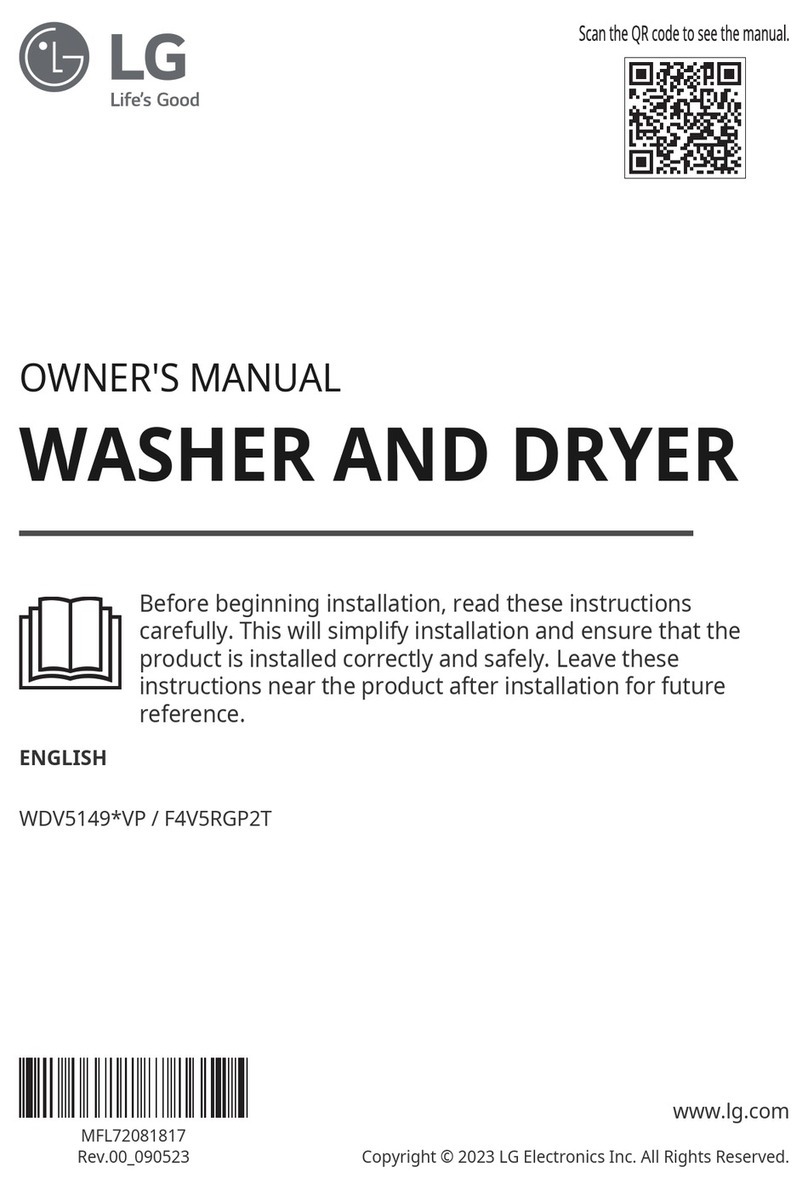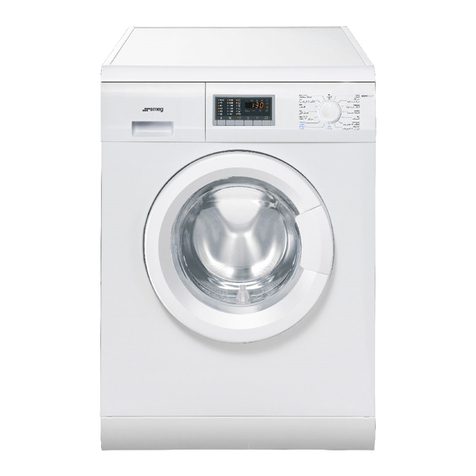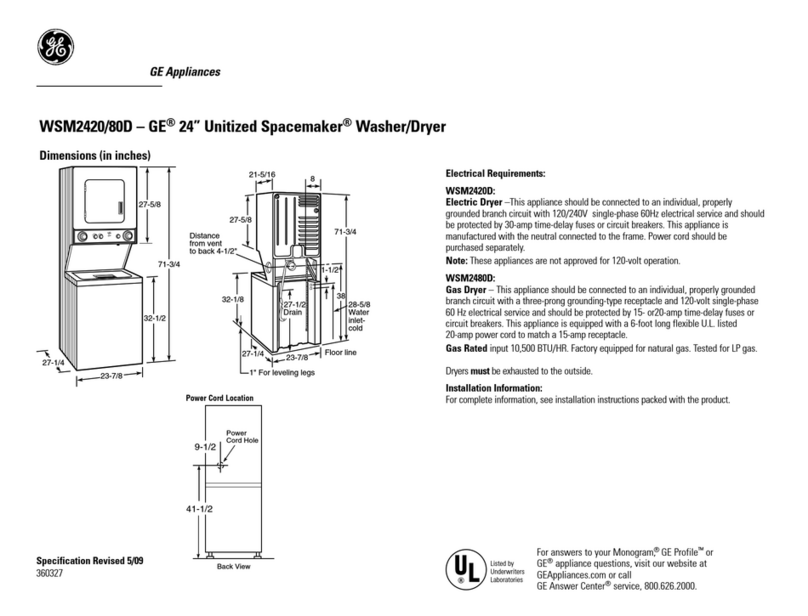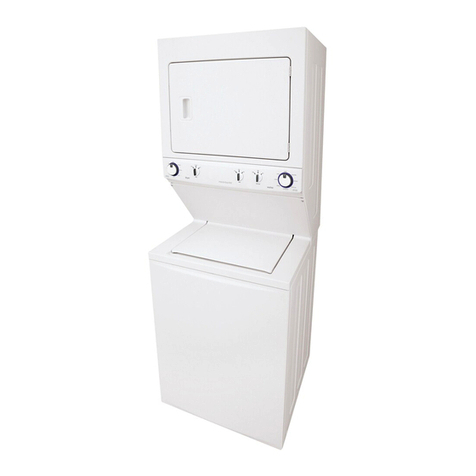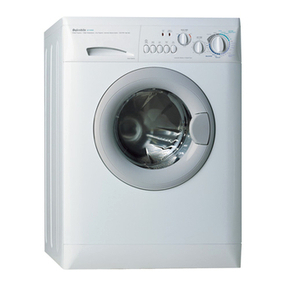GB
9
Setting the temperature
Turn the TEMPERATURE knob to set the wash temperature (see able of wash cycles).
The temperature may be lowered, or even set to a cold wash . The washer-dryer will automatically prevent you
from selecting a temperature which is higher than the maximum value set for each wash cycle.
Setting the drying cycle
Turn the DRYIN knob to select the desired drying
option. There are two options:
A - Based on time: From 40 minutes to 180.
B - Based on the desired laundry dryness level:
Iron dry : suitable for clothes which will need ironing
afterwards. the remaining dampness softens creases,
making them easier to remove.
Hanger dry : ideal for clothes which do not need to be dried fully.
Cupboard dry : suitable for laundry which can be put back in a cupboard without being ironed.
If your laundry load to be washed and dried is much greater than the maximum stated load (see adjacent table),
perform the wash cycle, and when the cycle is complete, divide the garments into groups and put some of them back
in the drum. At this point, follow the instructions provided for a "Drying only" cycle. Repeat this procedure for the
remainder of the load.
Drying only
Use the cycle selector knob to select a drying cycle (11-12) in accordance with the type of fabric. The desired drying
level or time may also be set using the DRYIN knob.
Functions
The various wash functions available with this washer-dryer will help to achieve the desired results, every time.
To activate the functions:
1. Press the button corresponding to the desired function;
2. the function is enabled when the corresponding indicator light is illuminated.
Note: If the indicator light flashes rapidly, this signals that this particular function may not be selected in
conjunction with the selected wash cycle.
Delay timer
To set a delayed start for the selected programme, press the corresponding button repeatedly until the required
delay period has been reached. When this option is enabled, the symbol lights up on the display. To remove the
delayed start option press the button until the text "OFF" appears on the display.
This option is enabled with all programmes.
Selecting this option enables you to suitably adjust drum rotation, temperature and water to a reduced load of lightly
soiled cotton and synthetic fabrics (refer to the
" able of wash cycles"
). enables you to wash in less time
thereby saving water and electricity. We suggest using a liquid detergent suitably measured out to the load quantity.
This function may not be used in conjunction with cycles 1, 5, 6, 7, 8, 9, 10, 11, 12, 13, , , .
1400-600
Press this button to reduce the spin speed
This function may not be used in conjunction with cycles 6, 11, 12, 13, .
Personalisation
Fabri
type
Load type Max.
load
(kg)
Cupboard
dry
Hanger
dry
Iron
dry
Cotton Clothing of different
sizes, Terry towels 5180170140
Synthetics Sheets, Shirts, Pyjamas,
socks, etc. 3 140 120 100
Table of Drying times (guideline values)



